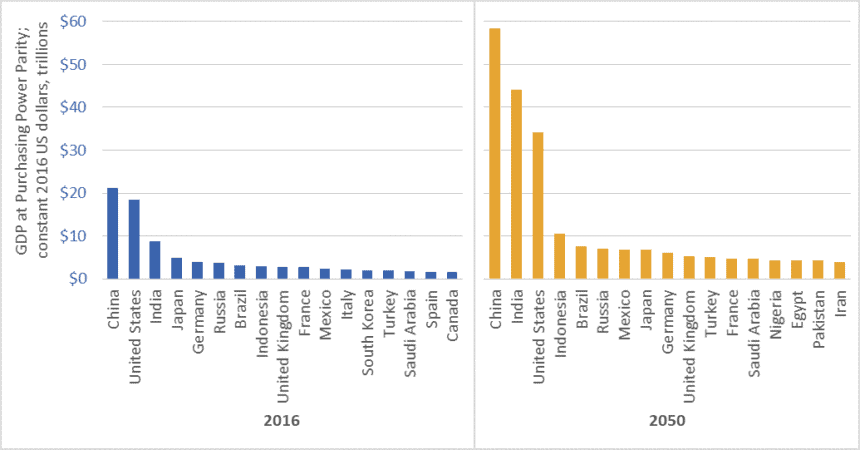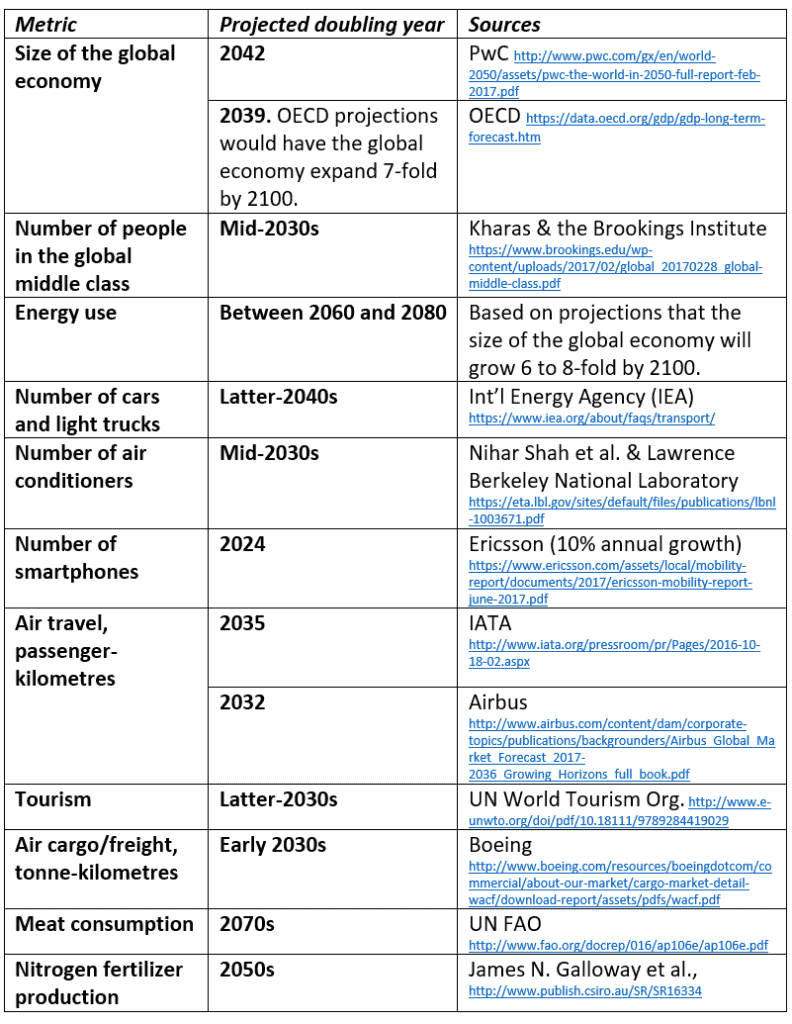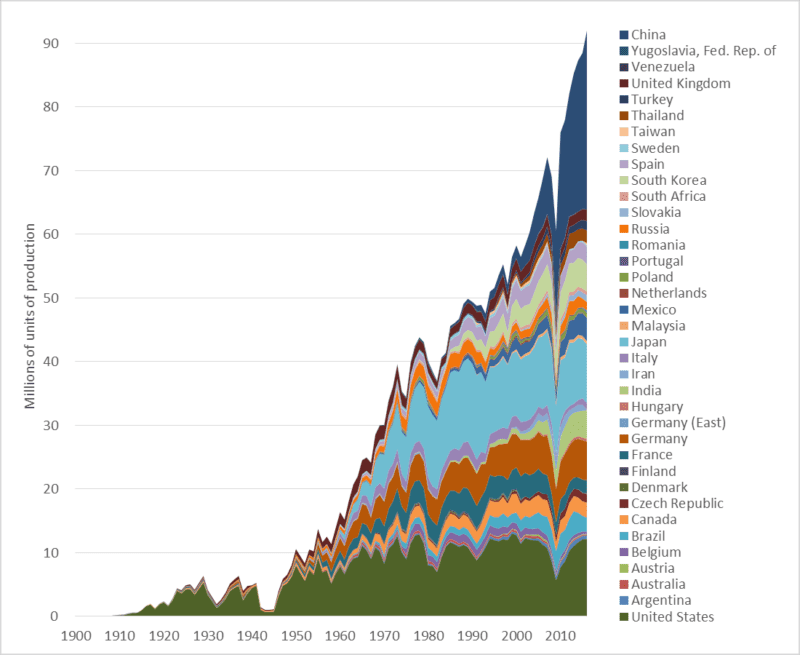Saskatchewan’s greenhouse gas emissions are extremely high: 66 tonnes per person per year. What if Saskatchewan was a country, instead of a province? If that were the case, we’d find that no country on Earth had per-capita emissions higher than ours.
This week’s graph compares per-capita greenhouse gas (GHG) emissions in Saskatchewan to emissions in a variety of countries. The units are tonnes of carbon dioxide equivalent (CO2-eq). The data is for the years 2014 and 2015, the most recent years for which data is available. The graph shows that Saskatchewan’s emissions are higher than those of petro-states such as Saudi Arabia and Qatar and manufacturing nations such as China and Germany.
Our world-topping per-person emissions form part of the context for this week’s release of the Government of Saskatchewan’s climate strategy: Prairie Resilience: A Made-in-Saskatchewan Climate Change Strategy. The report isn’t really a plan of action—more an attempt at public relations and a collection of re-announcements. Most critically, it lacks a specific set of measures that can, taken together, enable citizens and businesses in this province to reduce our GHG emissions by 30 percent by 2030. I’ll review some of the key points of the document, but first just a bit more context.
In Paris in 2015, the world’s governments reaffirmed a target of limiting global temperature increases to 2 degrees Celsius (relative to pre-industrial levels). However, more and more scientists are warning that 2 degrees is not a “safe level,” and that temperature increases of this magnitude will create floods, droughts, storms, and deaths in many parts of the world. But a 2 degree rise is better than 4 or 5 degrees.
So that’s the first point: our 2 degree target is weak. To this we’ve added inadequate emission-reduction commitments. In the lead-up to the Paris climate talks the world’s governments each submitted specific emission-reduction commitments. Canada committed to cut this country’s emissions by 30 percent (below 2005 levels) by 2030. Other nations made similar pledges. But here’s the troubling part: When you add up all those emissions-reduction commitments you find that they put the world on track, not for 2 degrees of warming, but for 3.2 degrees (UN Emissions Gap Report 2017). So this is the context for recent climate change strategies from Saskatchewan and other provinces: These plans amount to inadequate provincial contributions to an inadequate national commitment to a weak international target.
One final bit of context: not only are per-capita emissions in Saskatchewan among the highest in the world, they continue to increase: up 65 percent in a generation (1990 to 2015). Some will want to excuse our province: it’s cold here. But our per-capita emissions are almost twice as high as those in the Northwest Territories, nine times as high as in the Yukon, and four times as high as those in neighbouring Manitoba. Others will want to talk about the fact that Saskatchewan is a resource-producing and agricultural province; our prosperity depends upon our ability to keep farming and mining and producing oil and gas. There’s a grain of truth to some parts of that idea, but it simply cannot be the case that “prosperity” requires the emission of 66 tonnes of GHGs per person. Citizens in every nation want prosperity. But if everyone in the world felt entitled to emit GHGs at the same rate as us, there would soon be no Saskatchewan as we know it. There would be a parched desert here, and submerged cities worldwide. In a climate- and carbon-constrained world, prosperity simply cannot require Saskatchewan-sized emissions.
So, with this for context, what does the Saskatchewan Climate Change Strategy propose? The government has re-committed to increasing the production of low-emission electricity—to the “expansion of renewable energy sources up to 50 per cent of generating capacity” by 2030. This is good news and we must ensure that this happens, well before 2030, if possible. But careful readers might note three things in the preceding commitment: 1. the words “up to.” 2. generating capacity is not the same as output; because of the intermittent nature of wind power, for example, 50 percent of capacity will not equate to 50 percent of production. 3. electricity provides less than 30 percent of Saskatchewan’s total energy demand. Thus, moving to 50 percent renewable/low-emission sources for electricity leaves 80+ percent of Saskatchewan’s energy needs filled by high-emission fossil fuels.
The Climate Change Strategy includes the creation of a technology fund. But this is not new. The government passed legislation in 2010 requiring large emitters to pay into a green technology fund. That law was never put into force.
Predictably, the Strategy rejects a carbon tax, arguing that such a tax “would make it more difficult for our province to respond effectively to climate change because a simple tax will not result in the innovations required to actually reduce emissions.”
The Strategy also includes a vague mix of commitments to reporting, potential future measures to reduce methane emissions, emission-intensity targets, and offset trading. Think of this as a cap-and-trade system without a cap.
The Strategy includes some positive steps but fails to deliver what we need: a comprehensive, detailed plan that will result in a 30 percent reduction in emissions by 2030. This failing is especially evident when one takes into account probable emissions increases that may result from economic growth, planned increases in energy production, and increased use of agricultural inputs such as nitrogen fertilizer. (Applied tonnage of N fertilizer has doubled since 2002.)
Overall, the Strategy steers away from discussions of emissions reduction and focuses instead on the idea of “resilience.” That word appears 44 times in 12 pages. The report defines resilience as “the ability to cope with, adapt to, and recover from stress and change.” But resilience—coping, adapting, and recovering—may simply prove impossible in the face of the magnitude of climate change that will scorch our province under a business-as-usual scenario. The high-emission, fossil-fuel-dependent future assumed in the Climate Change Strategy would raise the average temperature of this province by 6 to 8 degrees Celsius (sources available on request). Climate disruption of that magnitude vetoes adaptation and mocks resilience.
And even if we in Saskatchewan could find ways to adapt and make ourselves resilient in the face of the blows that may be inflicted by a hotter, stormier, more damaging climate, we must ask: Will poor and vulnerable populations around the world be able to make themselves “resilient” to the climate change that our emissions trigger? The global proliferation of Saskatchewan-level emissions would cause cities to disappear under the waves, food-growing regions to bake and wither, and tropical storms to become more numerous and damaging. What is our ethical position if we are among the greatest contributors to these calamities, yet all we offer affected populations is the advice to make themselves more resilient?
A real plan is possible. Emission reductions of 30 percent by 2030 are attainable at costs that Saskatchewan can afford. Holding global temperature increases to 2 degrees also remains possible. All this can be accomplished if governments act with courage and integrity, rapidly and effectively, and in the interests of citizens and the future.
Graph sources:
Saskatchewan and other provinces: Environment and Climate Change Canada, Canadian Environmental Sustainability Indicators: Greenhouse Gas Emissions.
Other nations: World Resources Institute, CAIT Climate Data Explorer.














